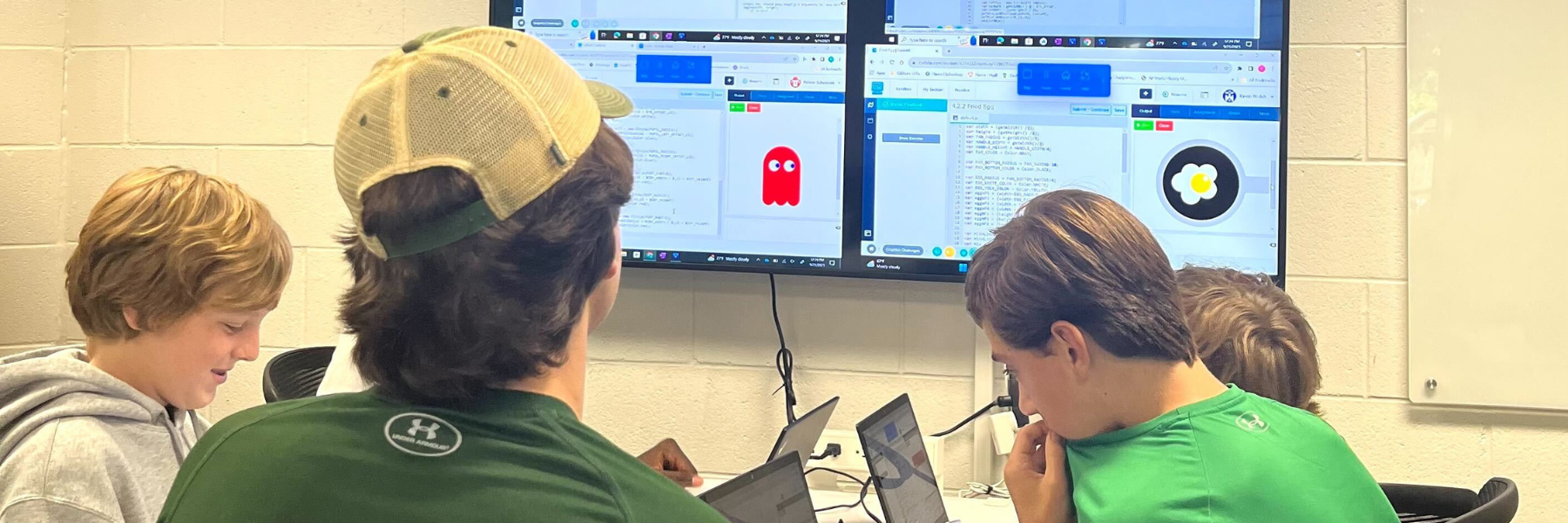Background
Cardinal Gibbons is a co-educational college preparatory school of the Roman Catholic Diocese of Raleigh, North Carolina serving approximately 1,600 students in grades 9 through 12.
The Challenge
Lesley Coe, the chief technology officer at Cardinal Gibbons, was looking for a solution that made it easy for teachers to share their screens and that also provided easy-to-use and reliable collaboration tools for both students and teachers. The screen sharing methods previously used—Miracast and ScreenBeam–at Cardinal Gibbons had been challenging for new educators to learn, and frustrating and inconsistent for veterans. Because of this, Coe had decided not to commit to them.
Said Coe, “We were using ScreenBeam but managing it independently because central management was another cost. Some teachers were using it, but only ones who were okay with its limitations and it wasn’t consistent enough I wanted to commit to it.” Additionally, she found that replacement parts were expensive, support tickets took up too much time, and classroom set up was labor and time intensive.
Coe was specifically interested in untethering teachers from the front of the class to give them more flexibility to teach from anywhere in the classroom while screen sharing. She wanted a solution that was aligned to their vision of making technology and tech support both visible and proactive.
The Solution
From Pilot to Vivi in Every Classroom
Cardinal Gibbons started with an initial two-month pilot in 10 classrooms, putting Vivi in the hands of teachers with a range of experience and comfort with technology. Following the successful pilot, the school moved forward with a Vivi implementation in every classroom, paired with a projector. Some classrooms have multiple displays, which allow teachers to utilize different screens for small group work.
“Vivi proved to be the untethering solution that just works,” Coe said. As one teacher who participated in the pilot stated, “I’ve been teaching for 30 years and have used every piece of technology under the sun…Vivi is the best thing yet!”
Coe also appreciated that Vivi was device and OS-agnostic. She also liked that Vivi allowed them to eliminate additional hardware and associated costs for items like doc cams, smart panels, additional wiring cods, cables, mounting hardware, and more.
Extending Beyond Classrooms and Screen Sharing
In their second year, the school added several TVs throughout the campus, adding a Vivi to each screen. Currently, the school leverages Vivi in all learning spaces with a screen, including learning centers for students, community spaces, and two new faculty innovation spaces for faculty to connect, share, and collaborate. Said Coe, “Using Vivi is now second nature to how we share around here.”
Here are a few ways that Cardinal Gibbons uses Vivi today:
Classrooms: All classrooms have Vivi and new classrooms have multiple displays, allowing teachers to combine screens for surroud display, or enable students to work in small groups on different displays. Students are equipped with individual devices, so they can work independently while the teacher works with other students. Every student is expected to be ready to share and collaborate. Nancy Barkin, Assistant Head of School for Academics and an English teacher, shared how Vivi is enhancing student engagement with instructional content, “My students will never raise their hand, but all of them will share their work on the screen.”
Digital Signage: Cardinal Gibbons uses Vivi for campus communication in community spaces around campus to display information about upcoming student events, club and student group meetings, school calendars, and other helpful reminders.
Emergency Alerts: All community spaces have displays and the key card security system is linked to the emergency broadcast system. Lock downs are set to automatically trigger an emergency broadcast to all displays via Vivi, adding a visual component to emergency notifications.
Broadcasting: Leveraging central management and scheduling, Vivi automatically activates all screens at the beginning of the school day for morning prayer and campus announcements. “We are using Vivi to automatically push the broadcast at a scheduled time, so teachers don’t have to turn on the projector, go to YouTube and find the right broadcast anymore,” described Coe.



